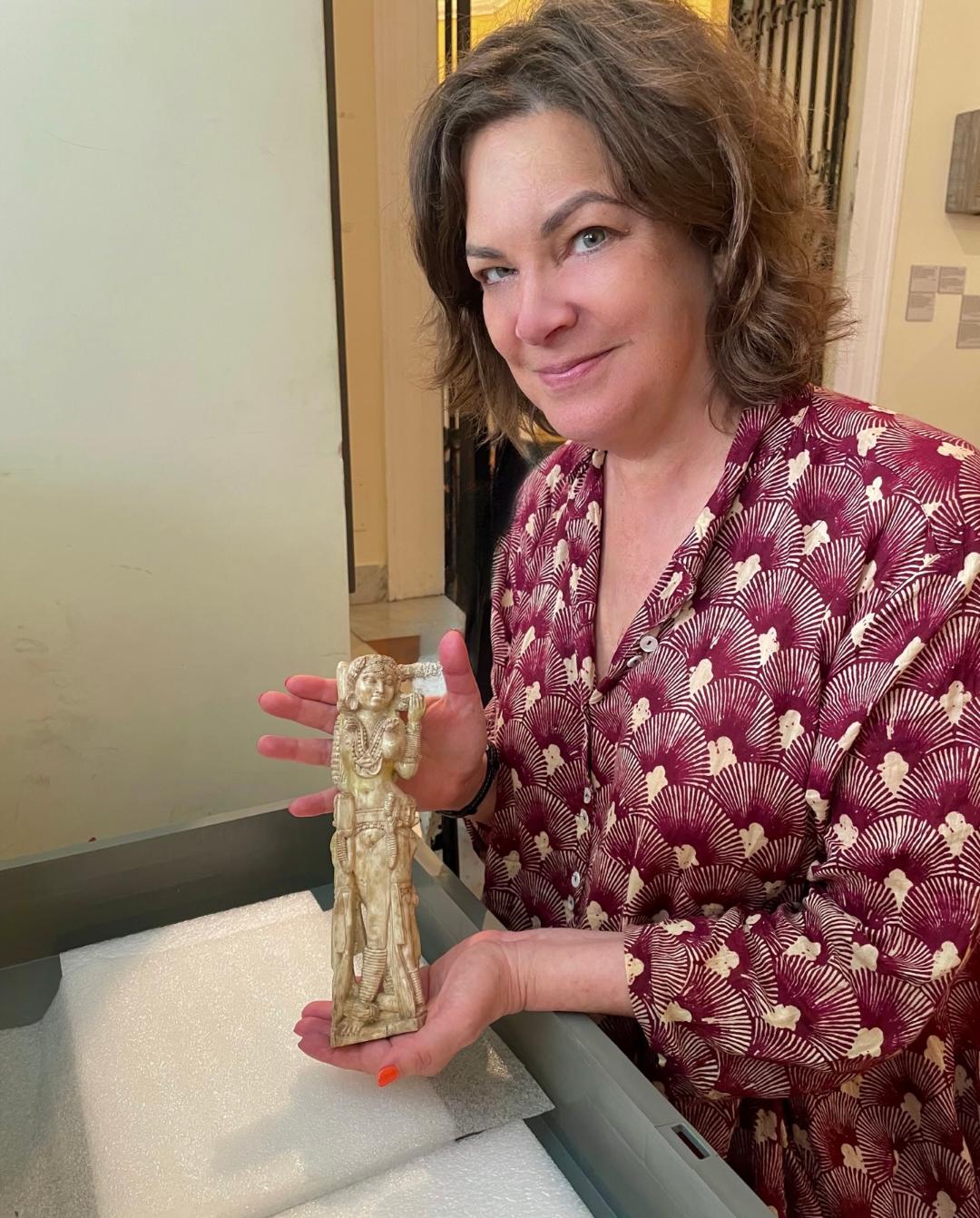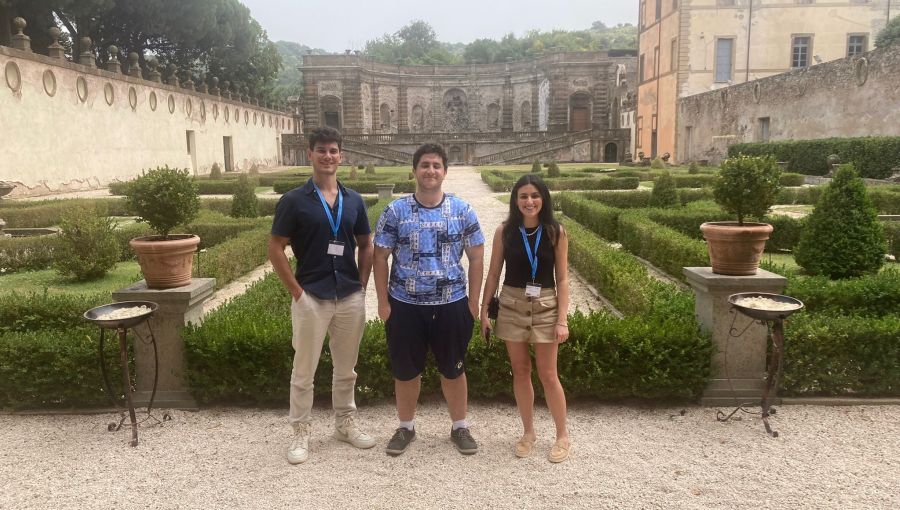Alumna Laura R. Weinstein Gives Talk at Naples National Archaeological Museum
John Cabot University MA in Art History alumna Laura R. Weinstein (Class of 2019) was invited to the Museo Archeologico Nazionale di Napoli (Naples National Archaeological Museum) on November 30, 2023, to give a talk in Italian about the subject of her JCU master’s thesis.
Laura’s research, which was sparked in March 2018, focused on an ivory statuette that was discovered in the ruins of Pompeii, a Roman city destroyed in the eruption of Mount Vesuvius in 79 CE. This voluptuous statuette was identified in 1938 as the Indian Goddess Lakshmi, a name that has stuck for almost 100 years. It was the first Indian artifact discovered in the Roman Empire, and it is material proof of commercial trade between India and the Roman Empire in the first century CE. The statuette, which was discovered by Italian archaeologist and superintendent of Pompeii at the time, Amedeo Maiuri, is currently held in the Naples National Archaeological Museum’s Secret Cabinet.

The so-called “Pompeii Lakshmi,” which is a little over 24 centimeters tall, represents a nearly naked woman covered only by jewels and a belt, and donning an elaborate hairstyle. On the woman’s sides are two handmaids facing outwards and holding containers, and there is a hole drilled down from the top of her head to the level of the navel.
According to the first interpretation by Giuseppe De Lorenzo (1871 – 1957), a professor at the University of Naples, the statuette represents the Hindu goddess Lakshmi, and dates back to the first century CE. De Lorenzo believed that it was probably crafted near today’s New Delhi. He also noticed that at the base of the statuette there is an inscription which he believed to be in Kharosthi, a script mainly used in the northern parts of ancient India. Maiuri believed the owner of the statuette could have been either a merchant or a wealthy aristocrat. Based on these observations, De Lorenzo and Maiuri hypothesized that the statue could have been either an object of worship, or the handle of a mirror.
However, subsequent interpretations suggested that the iconography is not in line with usual depictions of the goddess Lakshmi, which usually involves four arms and a very prominent lotus flower. Instead, it might be depicting a semi-divine nature spirit representing fertility and abundance. Laura suggested that the statuette might have been seen by those in ancient Pompeii as the Indian and female version of Priapus.
The creation spot of the Pompeii Lakshmi is still unsure. Maiuri initially thought that it was made near Mathura, in today’s Uttar Pradesh Indian state. However, subsequent discoveries point to the fact that it might have been produced in Bhokardan (in the Indian state of Maharashtra), since similar figurines were discovered in parts of Maharashtra that fell under the Satavahana dynasty 2000 years ago. The statue also has many similarities with the female figures on the monumental gates at Sanchi, decorated during the Satavahana reign. The writing in Kharosthi at the base of the statuette suggested it might have originated in the northwestern regions of India, Pakistan, or Afghanistan. However, it might in fact be Brahmi script which was more common in the south.
Laura has been studying the Pompeii Lakshmi for nearly six years and visited dozens of Italian, Egyptian and Indian archaeological sites, some deep in the heart of India. She concluded the talk by saying that she would like to return to India to continue studying the statuette and possibly produce a documentary about it and the trade relations between India and Ancient Rome.





